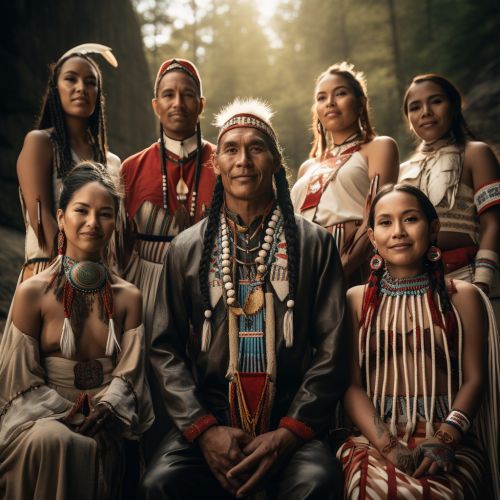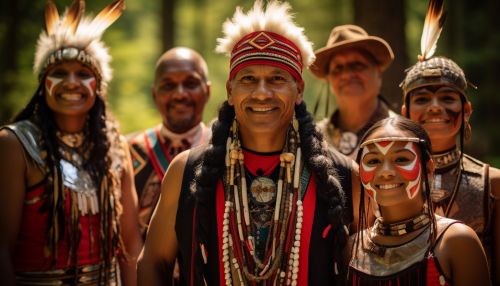Genetic history of indigenous peoples of the Americas
Introduction
The genetic history of the indigenous peoples of the Americas primarily focuses on Human Y-chromosome DNA haplogroups and Human mitochondrial DNA haplogroups. Geneticists have variously estimated that people of Asia and the Americas were part of the same population from 42,000 to 21,000 years ago.


Genetic distribution
The genetic pattern indicates Indigenous Americans experienced two very distinctive genetic episodes; first with the initial peopling of the Americas, and secondly with European colonization of the Americas. The former is the determinant factor for the number of gene lineages, zygosity mutations and founding haplogroups from Africa and the latter as a result of admixture of colonial era immigrants with Indigenous Americans.
Initial peopling of the Americas
The initial peopling of the Americas is a long and complex story and remains somewhat of a mystery as the routes taken to reach the Americas are still subject to ongoing research and discussion. However, from a genetic perspective, the migration from Siberia across the Bering Strait is well accepted. The Bering land bridge is thought to have been the route of the earliest migration of humans from Asia to the Americas.
Genetic markers
The genetic markers that denote West Eurasian ancestry all come from the maternal or mitochondrial DNA side, and not the paternal Y-DNA. The genetic markers that researchers use to find the history of Indigenous Peoples are Haplogroups. These haplogroups are identified in sequences of mitochondrial DNA with high mutation rates, known as control regions.
Haplogroups
Each haplogroup can be traced back to a single mutation at a specific place and time. By counting the genetic mutations, scientists are able to estimate when a given group of people diverged from their common ancestor. Haplogroup assignments thus become more specific over time as more people are tested and more mutations are found.
Mitochondrial DNA
Mitochondrial DNA (mtDNA) studies indicate that the indigenous peoples of the Americas have a measurable amount of Asian ancestry, primarily from eastern and central Asia. The distribution of haplogroups in Indigenous American population is widely uneven. Subhaplogroup C1b, C1c, C1d, and C1e are exclusively found in the indigenous peoples of the Americas.
Y-chromosome DNA
Y-DNA, like mtDNA, differs from other nuclear chromosomes in that the majority of the Y chromosome is unique and does not recombine during meiosis. This allows the historical pattern of mutations to be traced to a recent common ancestor. Indigenous American groups that received genes from a common ancestor are Haplogroup Q-M3 and Haplogroup P-M45.
European colonization and the genetic history of Indigenous Americans
The European colonization of the Americas fundamentally changed the lives and cultures of the resident Indigenous peoples. Although the exact pre-colonial population-count of the Americas is unknown, scholars estimate that Indigenous populations suffered a catastrophic decline of more than 80% following the European contact, due to diseases and warfare.
Admixture
Admixture occurs when two or more previously isolated populations begin interbreeding. New traits can be introduced into a population and then disseminated through recombination. The majority of these traits are inherited autosomally. Autosomal genetic analyses of Indigenous Americans show a uniform amount of both Indigenous American and European ancestry.
Conclusion
The genetic history of Indigenous Americans is a complex and continually developing field. The data indicates that there was a significant genetic divergence between the populations in Asia and the Americas around 25,000 years ago, and the European colonization of the Americas brought about significant changes in the genetic makeup of Indigenous Americans.
